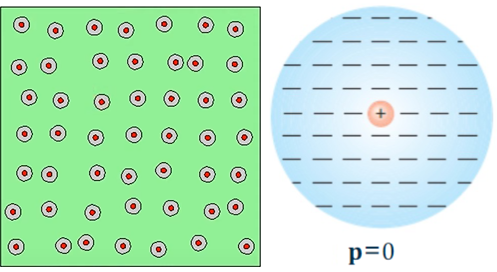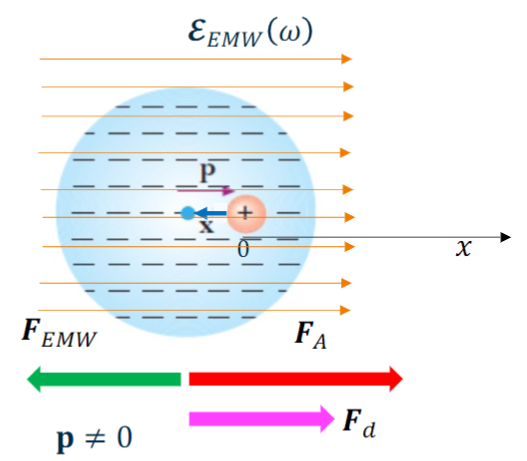To study how light interacts with matter we can, as a first approximation, think about a dampened harmonic oscillator that evolves according to the following second order differential equation
where
The idea of the Lorentz model is to model the electronic cloud as a mass attached to the nucleus by a spring.
When no external electrostatic field is applied, the distribution of electrons is centered around the nucleus and thus there is no electric dipole moment (

As soon as we apply a varying electric field


In case of a single electron we can write the following equation to describe its motion around the rest position:
where
The resonant frequency is given by
If we now consider the complex field of a linearly polarized monochromatic plane wave as the product of magnitude and phase
whose steady state solutions are given by
The real part of
todo explain better the formula
Complex polarization
Similarly to what was done for the electromagnetic field, we can write the polarization as a complex quantity
In the case of a medium represented by a gas of
todo why the step after
The same expression can be obtained for a generic electron displacement
We can then extract the real parts from the equation above to get
Frequency dependent optical susceptibility
From
with
Plotting the real and imaginary parts of the susceptibility in units of
Displacement vector
Recalling the definition of electric displacement:
if we consider the displacement vector as a complex quantity
Absorption and dispersion

